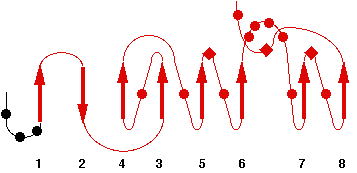4C87
Name : Esterase LpEst1 from Lactobacillus plantarum WCFS1
Revelation date : 02-Apr-2014
Family : Hormone-sensitive_lipase_like
Gene_locus : lacpl-LP.0973
PDB file : ESTHER: header of PDB entry RCSB: Full entry
Comment
Alvarez, Y., Esteban-Torres, M., Cortes-Cabrera, A., Gago, F., Acebron, I., Benavente, R., Mardo, K., de-las-Rivas, B., Munoz, R., Mancheno, J.M.
Ligand :
References (2)
| Title : Esterase LpEst1 from Lactobacillus plantarum: A Novel and Atypical Member of the alphabeta Hydrolase Superfamily of Enzymes - Alvarez_2014_PLoS.One_9_e92257 |
| Author(s) : Alvarez Y , Esteban-Torres M , Cortes-Cabrera A , Gago F , Acebron I , Benavente R , Mardo K , de Las Rivas B , Munoz R , Mancheno JM |
| Ref : PLoS ONE , 9 :e92257 , 2014 |
| Abstract : Alvarez_2014_PLoS.One_9_e92257 |
| ESTHER : Alvarez_2014_PLoS.One_9_e92257 |
| PubMedSearch : Alvarez_2014_PLoS.One_9_e92257 |
| PubMedID: 24663330 |
| Gene_locus related to this paper: lacpl-LP.0973 |
| Title : Preliminary X-ray analysis of twinned crystals of the Q88Y25_Lacpl esterase from Lactobacillus plantarum WCFS1 - Alvarez_2011_Acta.Crystallogr.Sect.F.Struct.Biol.Cryst.Commun_67_1436 |
| Author(s) : Alvarez Y , Esteban-Torres M , Acebron I , de Las Rivas B , Munoz R , Martinez-Ripoll M , Mancheno JM |
| Ref : Acta Crystallographica Sect F Struct Biol Cryst Commun , 67 :1436 , 2011 |
| Abstract : Alvarez_2011_Acta.Crystallogr.Sect.F.Struct.Biol.Cryst.Commun_67_1436 |
| ESTHER : Alvarez_2011_Acta.Crystallogr.Sect.F.Struct.Biol.Cryst.Commun_67_1436 |
| PubMedSearch : Alvarez_2011_Acta.Crystallogr.Sect.F.Struct.Biol.Cryst.Commun_67_1436 |
| PubMedID: 22102251 |
| Gene_locus related to this paper: lacpl-LP.0973 |
Representative scheme of Prolylcarboxypeptidase structure and an image from PDBsum server

